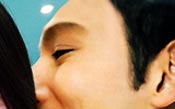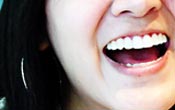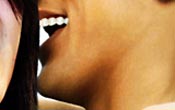 |
|
| Extraction | Wisdom Teeth | Bonegraft | Sinus Lift | Ridge Augmentation | Nerve Reposition | Sedation Dentistry | Oral & Maxillofacial Surgery |
Extraction
We believe that every tooth is precious and one of the main goals of modern dentistry will always be the prevention of tooth loss. All possible measures should be taken to preserve and maintain your teeth because the loss of a single tooth can have a major impact upon your dental health and appearance. However, it is still sometimes necessary to remove a tooth. Some of the reasons for doing so can be seen below:




Severe Decay
Advanced periodontal disease
Infection or abscess
Orthodontic correction
Mal-positioned teeth
Fractured teeth or roots
Impacted teeth
Extracting teeth is made less difficult when the general principles of oral surgery are understood and practiced. If your dentist has recommended that a tooth be extracted, the following information will help you get through the first few days after your extraction. Should anything occur that seems out of the normal, do not hesitate to call your dentist.
Pain management must be addressed. Various pain management techniques must be used including: medical management (pre-surgical and post-surgical medications), regional nerve blocks, and local nerve blocks.
-
The top (coronal) 1/3 of the alveolar bone surrounding the tooth has 2/3rds of the holding power.
-
Periodontal fibers are not designed to withstand slow, continuous torque.
-
Multi-rooted teeth are transformed into single-rooted teeth.
-
Gingival preservation is paramount.
-
Complete extraction of root confirmed by radiograph.
-
Closure of alveolus to maintain blood clot.
The first step is the taking of dental radiographs to assist in
extraction planning. This provides concrete evidence that an
extraction is the only procedure possible and makes the
action defensible in a court of law. The techniques of
extraction include surgical and non-surgical procedures.
Following a close study of your radiographs your dentist
will be in a position to advise you on which is the best
procedure for you.
Non - Surgical Extraction
This method will be suggested when the affected tooth is already loose.
Non-surgical extraction is performed by placing gentle
traction and rotation on the affected tooth with dental
forceps or needle holders. Excess tissue is removed as
carefully as possible so as to avoid fracture. Once clean,
the alveolus can be filled with osteoinductive materials,
impregnated resins, or the newer bone morphogenic materials.
After filling, the alveolus is sealed. Following the
procedure we will try and make you as comfortable as
possible by providing home care support including antibiotic
therapy, pain management, and dietary advice.
Surgical Extraction
Surgical extraction is performed on non-mobile teeth with normal or near
normal attachment levels. If your dentist has studied your
radiographs and concluded that extraction is necessary the
next step will be the creation of a surgical flap. Your
highly skilled oral surgeon will make a precise incision
providing room to remove the alveolar bone. Following this
the surgeon will isolate and gently elevate the roots of
your tooth. After sufficient bone removal and elevation, the
tooth root should become mobile. Small dental forceps or
needle holders are used to grasp the tooth crown and then
rotate the tooth on its long axis. Your surgeon will rotate
the tooth to the point of resistance for 20 to 30 seconds.
The rotation is then reversed and again held for 20 to 30
seconds. By using slow, continuous forces, the fibers are
torn and the tooth becomes loose enough for gentle traction
to remove it from its socket.
After the roots have been successfully removed, a post-extraction
radiograph will confirm that the operation has been
successful. The alveolus can then be treated and sealed in
the same way as practiced in the non-surgical extraction.
POSTOPERATIVE INSTRUCTIONS
Do not disturb the wound as this may cause irritation, infection and/or bleeding.
Chew on the opposite side for 24 hours and keep
anything sharp from entering the wound (i.e. eating utensils etc.)
Avoid smoking as this will promote bleeding and interfere with healing.
Do not brush your teeth for the first 8 hours
after surgery. After, you may brush your teeth gently,
but avoid the area of surgery.
Avoid all rinsing for 24 hours after extraction.
This is to ensure that the blood gets a chance to clot.
This is essential to proper wound healing. Disturbance
of this clot can lead to increased bleeding or the loss
of the blood clot. If the clot is lost, a painful
condition called dry socket may occur.
You may use warm salt water or mild antiseptic
rinses after 24 hours but only if prescribed by your dentist.
Do not spit or suck through a straw as this will
promote bleeding and may dislodge the blood clot causing
a dry socket.
When you leave the office, you will be given
instructions regarding the control of postoperative
bleeding. A dressing will be placed on the affected area
and you will be asked to change this every 20 minutes or
so depending on the amount of bleeding that is
occurring. We will provide you with a package of gauze
to take with you. Should you need to use the gauze at
home, remember to roll it into a ball large enough to
cover the wound. If you have used up all of the gauze
and the bleeding persists you may fold a tea bag in half
and bite down on it. Tea contains Tannic Acid, a
styptic, which may help to reduce the bleeding.
You will probably experience some discomfort but
this is normal following surgery. Analgesic tablets (i.e.
Aspirin, Tylenol etc.) may be taken under your dentist's
direction. Prescription medication, which may have been
given to you, should also be taken as directed. If the
pain persists, please call your dentist.
To help prevent swelling, you may apply an ice
pack or a cold towel to the outside of your face during
the first 12 hours. Try applying the pack alternately,
20 minutes on then 20 minutes off. Continue this process
until you begin to feel more comfortable.
Eat normal regular meals as soon as you are able
after surgery. Cold, soft food such as ice cream, yogurt
or soup may be the most comfortable for the first day.
It is also important to drink plenty of fluids but
remember to avoid using a straw.
If the pain or bleeding is persistent and you
feel that there may be a problem please do not hesitate
to call your dentist.
HOME
l SERVICE
l DENTISTS
l TECHNOLOGY
l FACILITIES
l ABOUT US
l SITE MAP
PROMOTION
l PRICE&DURATION
l CONSULTATION
l FAQ
l LINKS
l MAP
l TESTIMONIALS
l OUR LAB
l RESOURCES
DENTAL BRACES
l TEETH WHITENING
l IMPLANT DENTISTRY
l ENDODONTICS
l OPERATIVE DENTISTRY
l SEDATION DENTISTRY
COSMETIC DENTISTRY
l PROSTHODONTICS
l PERIODONTICS
l ORAL SURGERY
l PAEDODONTICS
l GP & ORAL EXAM
l OCCLUSION
AIR-FLOW
l DENTAL LASER SYSTEM
l ENDODONTIC EQUIPMENT
l DENTAL UNITS
l OPERATING LAMP
l WHITENING SYSTEM
CT SCAN
l DENTAL MICROSCOPES
l NOBEL GUIDE
l STERILIZATION ROOM
l X-RAY
l ELECTROSURGICAL SYSTEM
l MINIPIEZON
DENTAL OFFICE
l DENTAL CLINIC
l COSMETIC DENTISTRY
l COSMETIC DENTIST
l TEETH BLEACHING
l TOOTH WHITENING
DENTAL CROWNS
l DENTAL IMPLANTS
l DENTAL TREATMENT
l DENTAL IMPLANT
............................................................................................................................. Copyright© 2004 SILOM DENTAL BUILDING. All Rights Reserved.
Local Call : 0 2636 9092-5, International Call : (+) 66 2636 9091, (+) 66 2636 9097
e-mail :silomdental@silomdental.com
Oral Surgery, Oral Surgeon, Oral & Maxillofacial Surgery, Ridge Aumentation, Nerve Reposition, Oral Syrgery Bangkok Thailand Dental